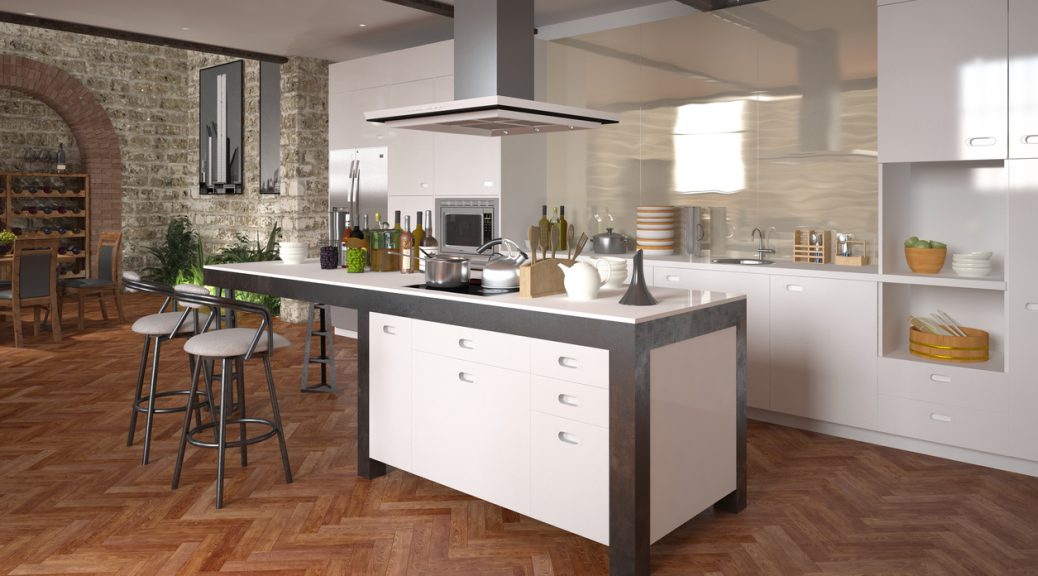The kitchen island, once considered an item designed solely for functionality, has become an integral part of home décor. How do you choose from the abundance of materials and functions for this staple item?
The kitchen island has become a key element in almost every modern kitchen, combining style and functionality. There are many options to consider when choosing your kitchen island. Here are some ideas.
Originally, the island consisted of a practical space on which meals were prepared. Eventually, it became a multipurpose piece of furniture that included elements such as a prepping station, sink, dishwasher, stove, small fridge, hot plate, oven, integrated cutting board and even a counter used for enjoying meals.
Furniture is decorative – and the kitchen island is no exception. Some kitchens have massive islands made of high-quality wood, anchored with sturdy legs, adorned with decorative detailing, topped with grill paneling or comprised of frosted glass when used as a storage unit. The island is the central focus point of the space, often standing out in comparison to other pieces in the kitchen.
Wood paneling can be combined with other materials such as laminate and stainless steel for a unique base. Materials, styles and colors can also be mixed to create an original design. The same goes for paint finishes: brushed, cracked, grainy or glazed. The base color can also be contrasted with the countertop to create a wow effect; for example, black and red. Alternatively, the color of the entire island could differ that of the kitchen to create a dramatic feel.
The island is often used to display decorative items such as dishes, kitchen items, trinkets and plants. Oftentimes, without glass panels! In some cases, the island can even be rounded – what a look!

The prepping station has surpassed its initial objective of serving uniquely as a functional space. When choosing the material, once must consider how the station plays into the décor of the room. Luckily, there are several available options.
- Laminate. Beautifully designed to be virtually indistinguishable from materials such as natural stone, including the lovely slate, wood essences, granite, bamboo, concrete, and marble. Reasonably priced.
- Granite. This material being a true natural stone, it is not perfectly smooth. It requires a bit of annual maintenance. However, its classic look never goes out of style.
- Stainless steel. Perfect if you like the appearance and shine of metal. Available in brushed satin, brilliant or flat finishes. So smooth that no bacteria can cling to it. Eco-friendly because it’s easy to recycle. Tends to develop scratches over time, but easy to maintain in general.
- Quartz. A more uniform colour than granite, quartz contains colours that can be very bright. It has proven its durability, but it costs more than granite. Its glossy look is greatly appreciated.
- Marble and limestone. The tints, textures and finishes are varied. However, these two materials stain easily. A protective coating is required.

- Ceramic. It comes in an endless number of color palettes, patterns and finishes. A wide variety to choose from. Easy to maintain, but it’s best to treat against bacteria.
- Composite materials. Aesthetically pleasing, great replicator of other materials (especially stone), low maintenance and good price.
- Concrete. You will be surprised to see the range of colours, textures and finishes. Requires a protective coat.

- Wood. Far from smooth, this material requires a protective coat because it is easily damaged. However, the warm aspect of its look makes up for it.
Photos: istock.com

